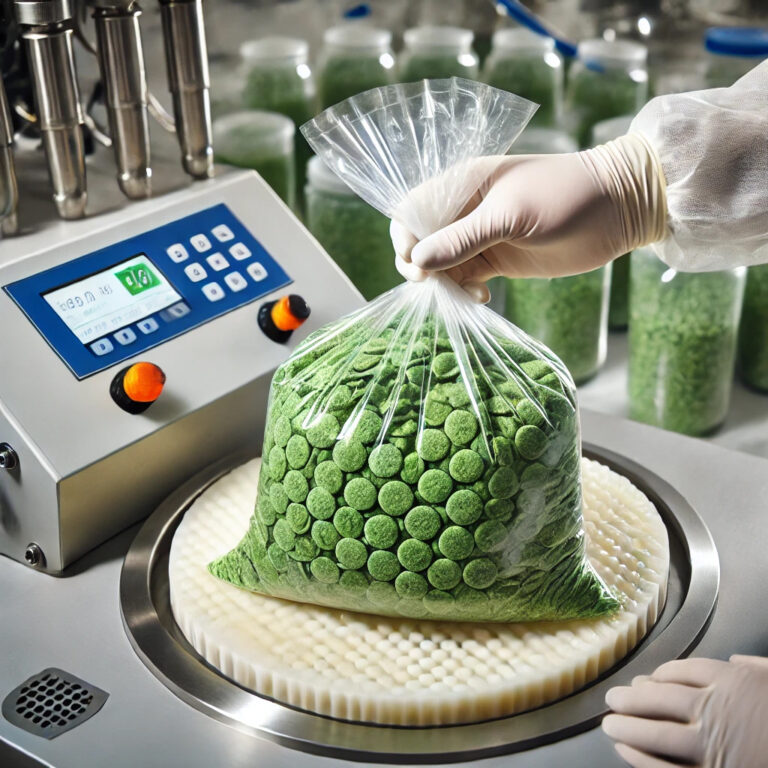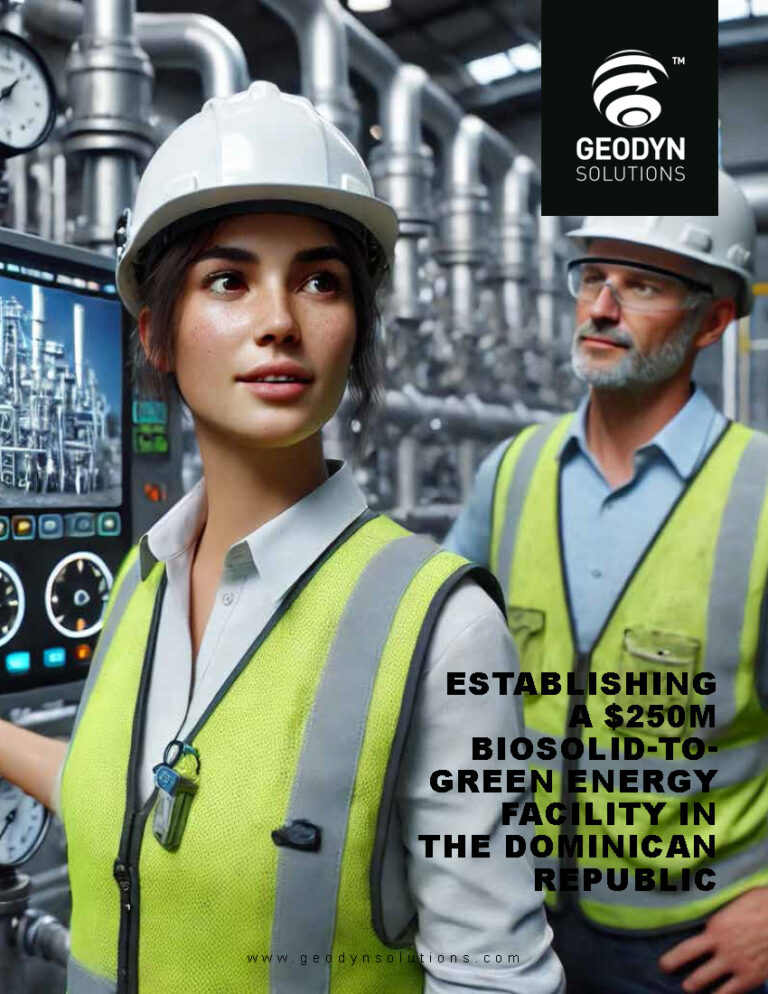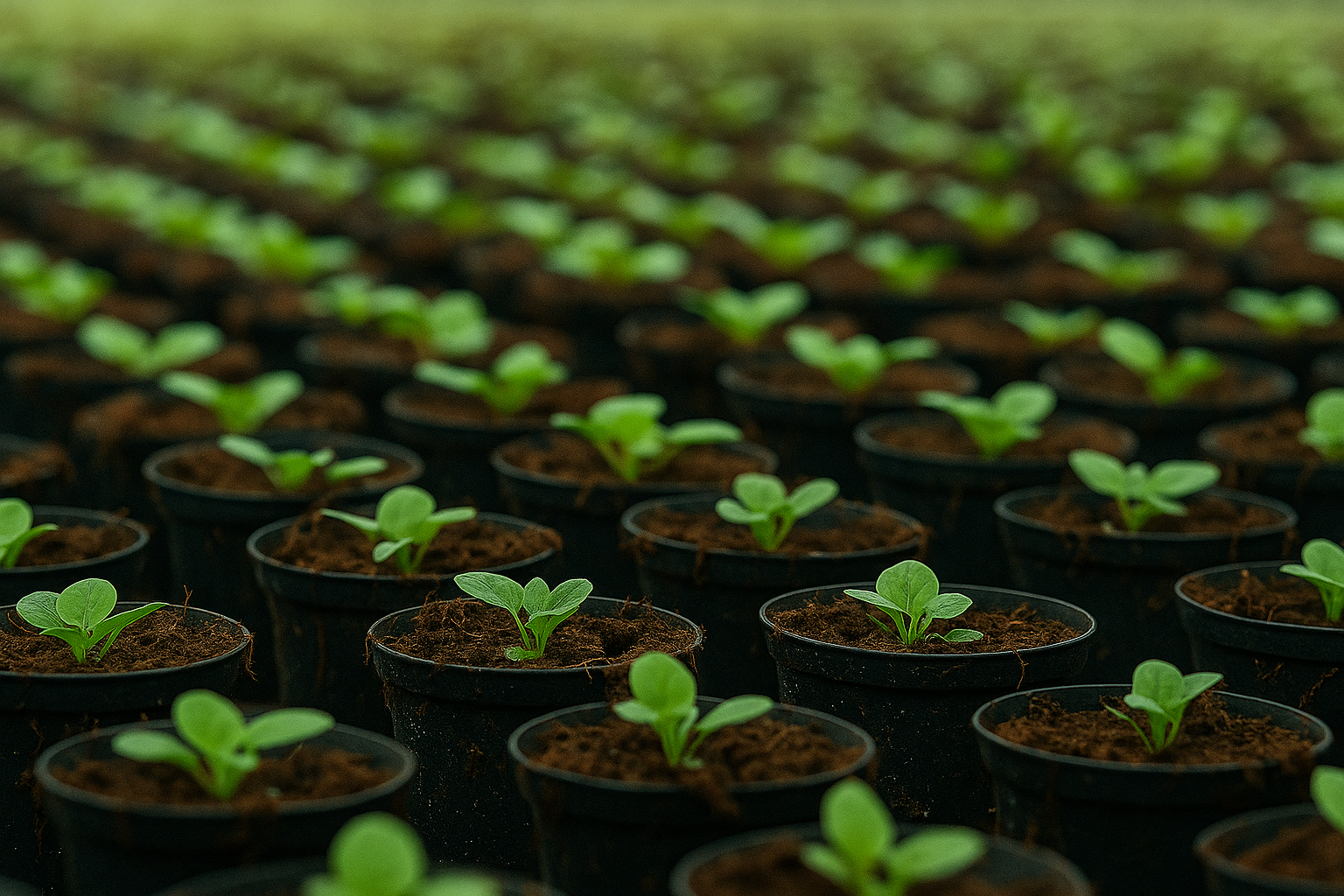Microbebio Factory Proposal: Organic Fertilizer, Microbial Culture, and Seed Enhancement Facility in Dominican Republic
Microbebio proposes a $25 million state-of-the-art facility in the Dominican Republic (DR) for producing organic fertilizers enriched with beneficial microbes, mycorrhizae, seaweed, algae, and locally sourced natural resources, farm, and organic waste. The facility will include dedicated labs for seed enhancement and microbial pest control, leveraging the DR’s abundant poultry manure (~0.8 million tons/year), coastal seaweed/algae resources, and agricultural waste. Low-cost labor, strategic Caribbean location, and government incentives (e.g., Law 158-01) will drive competitiveness. The project will create 85 direct jobs, achieve a return on investment (ROI) within 4.5 years, and promote sustainable agriculture. A 20% contingency ensures risk mitigation.
Project Overview
Objectives
- Establish a 50,000-square-foot facility for organic fertilizer production, microbial/mycorrhizal culture labs, seed enhancement, and microbial pest control.
- Utilize poultry manure, seaweed, algae, farm waste (e.g., bagasse, crop residues), and organic waste (e.g., food scraps) to produce eco-friendly biofertilizers and seed treatments.
- Produce 20,000 metric tons of organic fertilizer annually, incorporating proprietary microbial strains (e.g., Bacillus, Rhizobium), mycorrhizae (e.g., Glomus species), seaweed extracts, algae, and biopesticides (e.g., Trichoderma, Beauveria bassiana).
- Develop seed treatments to enhance germination, stress tolerance, and pest resistance.
- Achieve scalability, sustainability, and profitability while supporting regional farmers and reducing environmental impact.
Location Rationale
- Dominican Republic: Selected for its abundant poultry manure, coastal access to seaweed/algae, farm/organic waste availability, low land/labor costs, and port access for Caribbean/Latin American exports.
- Government incentives (e.g., tax exemptions under Law 158-01) and a growing agricultural sector (~1.2 million acres) support agro-industrial projects.
- Proximity to natural resources (e.g., Sargassum seaweed, sugarcane bagasse) enhances cost efficiency and sustainability.
Market Analysis
Demand for Organic Fertilizers and Seed Enhancements
- Global biofertilizers market: Projected to reach $5.2 billion by 2028, CAGR 10.9%.
- Biopesticides market: Expected to reach $10.6 billion by 2027, CAGR 14.7%.
- Seed treatment market: Valued at $9.6 billion by 2026, driven by sustainable microbial coatings.
- DR’s agricultural sector and Caribbean/Latin American export markets offer growth potential, supported by demand for organic and eco-friendly products.
Competitive Advantage
- Proprietary blend of 50+ microbial strains ensures superior biodiversity, endospore stability, and nutrient cycling.
- Mycorrhizae enhance nutrient uptake (8-32% yield increases for phosphorus/nitrogen).
- Seaweed/algae extracts (e.g., Ascophyllum nodosum, Spirulina) provide biostimulants, improving plant growth and stress tolerance by 10-20%.
- Seed enhancement labs develop microbial coatings to boost germination (up to 20%) and resilience.
- Microbial pest control (e.g., Bacillus thuringiensis, Trichoderma) reduces chemical pesticide use by ~30%.
- Local sourcing of poultry manure, seaweed, algae, farm, and organic waste lowers costs and carbon footprint.
Facility Design and Operations
Facility Components
- Production Area (25,000 sq. ft.): Composting, granulation, and packaging lines for organic fertilizer.
- Microbial Culture Labs (10,000 sq. ft.): Cultivation of nitrogen-fixing bacteria (e.g., Azotobacter, Rhizobium), phosphate-solubilizing bacteria, and mycorrhizal fungi.
- Seed Enhancement Labs (5,000 sq. ft.): Research/production of microbial and seaweed/algae-based seed coatings.
- Pest Control Labs (5,000 sq. ft.): Development of biopesticides (e.g., Beauveria bassiana, Metarhizium).
- Storage and Logistics (3,000 sq. ft.): Temperature-controlled storage for raw materials, fertilizers, and seed treatments.
- Administrative and R&D Offices (2,000 sq. ft.): Quality control, product development, and management.
Production Process
- Raw Material Processing: Poultry manure, seaweed, algae, farm waste (e.g., bagasse, banana leaves), and organic waste (e.g., market food scraps) composted with carbon-rich materials.
- Microbial Inoculation: Proprietary microbes, mycorrhizae, and biopesticides introduced during composting or as seed coatings; seaweed/algae extracts added for biostimulant properties.
- Granulation and Packaging: Compost processed into granules, seed treatments formulated, and products packaged.
- Quality Control: Labs ensure microbial viability, pest control efficacy, and compliance with organic standards (e.g., OMRI, EU organic certification).
Raw Material Sourcing
- Poultry Manure: ~0.8 million tons/year, sourced locally at ~$15/ton.
- Seaweed/Algae: 50,000 tons/year of Sargassum and other seaweeds from DR beaches, plus cultivated Spirulina ($10/ton after harvesting).
- Farm Waste: Sugarcane bagasse, rice husks, and crop residues (~100,000 tons/year, $5-10/ton).
- Organic Waste: Food scraps from markets and restaurants (~20,000 tons/year, minimal cost via municipal partnerships).
- Other Inputs: Mineral additives and water sourced locally.
Financial Projections
Capital Expenditure (CapEx)
Total CapEx: $25,000,000 (including 20% contingency)
Item | Cost ($M) | Description |
|---|---|---|
Land Acquisition | 0.5 | 10 acres in DR industrial zone |
Facility Construction | 8.5 | 50,000 sq. ft. building, including labs and production lines |
Equipment | 6.5 | Composting systems, granulators, bioreactors, seed coating machines |
Lab Setup | 3.0 | Microbial, seed enhancement, and pest control lab systems |
Infrastructure | 1.0 | Utilities, HVAC, waste management systems |
Subtotal | 19.5 | |
Contingency (20%) | 5.5 | Risk mitigation for cost overruns, import delays |
Total | 25.0 |
Operating Expenses (OpEx)
Annual OpEx: $5,600,000 (Year 1, including 20% contingency)
Item | Cost ($M) | Description |
|---|---|---|
Raw Materials | 1.6 | Poultry manure ($15/ton), seaweed/algae ($10/ton), farm/organic waste ($5-10/ton) |
Labor | 1.3 | 85 employees (avg. salary $15,000) |
Utilities | 0.7 | Electricity, water for production and labs |
Maintenance | 0.5 | Equipment and facility upkeep |
Distribution | 0.5 | Transportation and export logistics |
Subtotal | 4.6 | |
Contingency (20%) | 1.0 | Risk mitigation for supply chain, market fluctuations |
Total | 5.6 |
Revenue Projections
- Production Capacity: 20,000 metric tons/year (fertilizer); 500,000 seed treatment units; 1,000 tons biopesticides.
- Selling Price:
- Fertilizer: $450/ton (regional/export pricing, enhanced with seaweed/algae).
- Seed Treatments: $10/unit (microbial/seaweed coatings).
- Biopesticides: $600/ton.
- Annual Revenue:
- Fertilizer: 20,000 × $450 = $9,000,000.
- Seed Treatments: 500,000 × $10 = $5,000,000.
- Biopesticides: 1,000 × $600 = $600,000.
- Total: $14,600,000.
- Growth: 5% annual increase due to market expansion and adoption.
Return on Investment (ROI)
- Net Profit (Year 1): $14.6M (revenue) – $5.6M (OpEx) = $9.0M.
- EBITDA Margin: 61.6% (high due to low-cost inputs and diversified products).
- Break-even Point: Year 2.5, assuming steady production and sales.
- ROI: Total CapEx ($25M) recovered by Year 4.5, with cumulative profits of ~$41M by Year 5 (5% growth).
Job Creation
- Direct Jobs: 85
- Production Workers: 35 (operators, technicians)
- Lab Scientists: 20 (microbiologists, seed/pest control researchers)
- Direct Jobs: 85
- Management/Administrative: 15 (executives, HR, finance)
- Logistics/Support: 15 (drivers, warehouse staff)
- Indirect Jobs: ~150 (suppliers, seaweed harvesters, waste collectors).
- Economic Impact: $1.3M in annual wages (85 × $15,000), boosting DR’s economy.
Sustainability and Environmental Impact
- Waste Utilization: Diverts ~100,000 tons/year of poultry manure, ~50,000 tons/year of seaweed/algae, and ~120,000 tons/year of farm/organic waste from landfills, reducing methane emissions.
- Reduced Chemical Inputs: Microbial fertilizers replace ~40 pounds/acre of synthetic nitrogen; biopesticides reduce chemical pesticide use by ~30%.
- Seed Enhancement: Seaweed/algae coatings improve crop resilience, cutting water/fertilizer needs by 10-15%.
- Soil Health: Enhances microbial diversity and nutrient cycling, combating soil degradation.
- Carbon Footprint: Local sourcing of diverse inputs lowers emissions compared to synthetic inputs.
Risk Analysis and Mitigation
Risk | Impact | Mitigation |
|---|---|---|
Supply Chain Disruptions | High | Secure contracts with poultry farms, seaweed harvesters, and waste suppliers; maintain 3-month inventory. |
Regulatory Compliance | Medium | Obtain OMRI, EU, and regional certifications for exports. |
Market Adoption | High | Conduct field trials and farmer education in Caribbean/Latin America. |
Cost Overruns | High | 20% contingency in CapEx/OpEx; phased construction. |
Microbial Viability | Medium | Advanced lab protocols for strain stability and shelf life. |
Implementation Timeline
Phase | Duration | Activities |
|---|---|---|
Planning (Months 1-6) | 6 months | Site selection, permits, design, financing. |
Construction (Months 7-18) | 12 months | Build facility, install equipment, set up labs. |
Commissioning (Months 19-24) | 6 months | Test production lines, validate microbial/seed/pest control products. |
Full Operations (Month 25) | Ongoing | Begin commercial production at full capacity. |
Funding Strategy
- Equity: $10M from Microbebio and strategic investors.
- Debt: $12M loan from regional development banks or green financing programs.
- Grants: $3M from DR government incentives (e.g., Law 158-01) or international agricultural funds.
- Contingency: 20% reserve ($5.5M) to cover unexpected costs.
Conclusion
The $25M Microbebio facility in the Dominican Republic will position the company as a leader in sustainable agriculture, leveraging poultry manure, seaweed, algae, farm, and organic waste to produce organic fertilizers, seed enhancements, and microbial pest control solutions. With an ROI achievable in 4.5 years, 85 direct jobs created, and significant environmental benefits, this project capitalizes on the DR’s natural resources, cost advantages, and export potential. Microbebio is committed to delivering value to stakeholders and fostering sustainable agriculture across the Caribbean and beyond.




